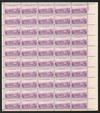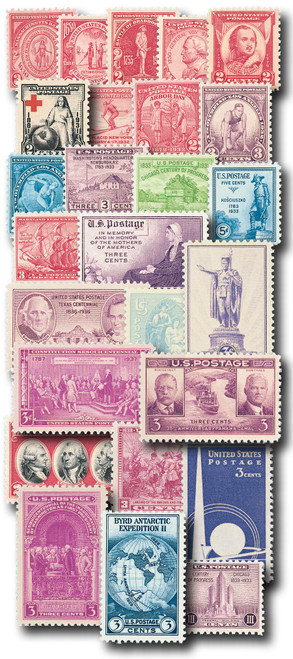
1935 3c California Pacific Exposition
# 773 - 1935 3c California Pacific Exposition
$0.35 - $25.00
U.S. #773
3¢ 1935-36 California-Pacific Exposition
3¢ 1935-36 California-Pacific Exposition
Issue Date: May 29, 1935
First City: San Diego, California
Quantity Issued: 100,839,600
Printed by: Bureau of Engraving and Printing
Printing Method: Rotary Press
Perforation: 11x10
Color: Purple
First City: San Diego, California
Quantity Issued: 100,839,600
Printed by: Bureau of Engraving and Printing
Printing Method: Rotary Press
Perforation: 11x10
Color: Purple
U.S. #773 was issued in conjunction with the California Pacific Exposition. Held in San Diego in 1935, the Exposition celebrated the 400th anniversary of Coronados discovery of the Pacific Southwest. Designed to help a California economy suffering from the Great Depression, the Exposition included exhibits featuring science, industry, and the arts. Odder attractions were also present, such as a recreation of an 1849 mining town called Gold Gulch, and the Zoro Garden Nudist Colony.
U.S. #773
3¢ 1935-36 California-Pacific Exposition
3¢ 1935-36 California-Pacific Exposition
Issue Date: May 29, 1935
First City: San Diego, California
Quantity Issued: 100,839,600
Printed by: Bureau of Engraving and Printing
Printing Method: Rotary Press
Perforation: 11x10
Color: Purple
First City: San Diego, California
Quantity Issued: 100,839,600
Printed by: Bureau of Engraving and Printing
Printing Method: Rotary Press
Perforation: 11x10
Color: Purple
U.S. #773 was issued in conjunction with the California Pacific Exposition. Held in San Diego in 1935, the Exposition celebrated the 400th anniversary of Coronados discovery of the Pacific Southwest. Designed to help a California economy suffering from the Great Depression, the Exposition included exhibits featuring science, industry, and the arts. Odder attractions were also present, such as a recreation of an 1849 mining town called Gold Gulch, and the Zoro Garden Nudist Colony.













